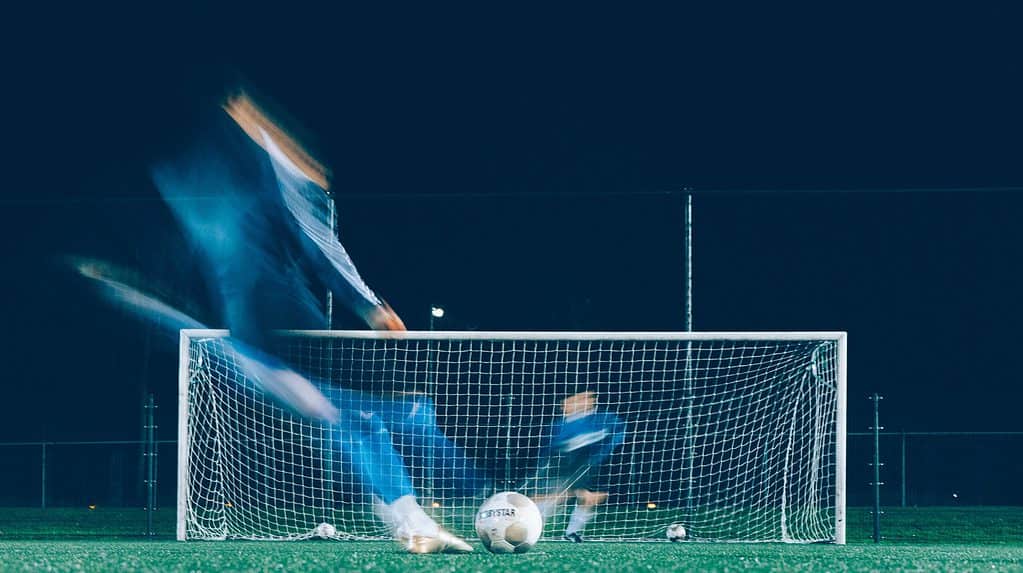When Argentina played France in the 2022 World Cup final, it was probably the best final ever. But, like many finals before it, it was decided by the cruel gods of penalty kicks. France missed more and Argentina took the cup — but if the French had talked to the University of Queensland researchers beforehand, things may have been very different.

Whether you call it football, soccer, or something else, it’s the most popular game in the world, watched by 3.5 billion.
Unlike other sports where draws are very unlikely (like basketball) or impossible (like tennis or volleyball), draws are very common in football. So oftentimes, when teams are evenly matched, there’s nothing to separate them; when this happens and a winner must be decided, the tie-breaker is penalty kicks.
Penalty kicks have little to do with the rest of the game. Sure, the players’ ability to control the ball is important, but at the end of the day, mental fortitude and chance play a far greater role.
“Penalties are the single-most-important method of scoring a goal in football – they are the only time in a match where a goal kicker and a keeper are matched one-on-one,” said Professor Robbie Wilson, head of the UQ Football Research Group at UQ’s School of Biological Sciences, and co-author of a new study on penalty kicking strategies. “Since 1986, 39% of knockout matches in the World Cup finals involved a penalty kick or were decided by a penalty shootout.”
Understandably, it’s in every players’ interest to pay attention to penalty tacking — and coaches would be wise to pay attention to this as well.
Different players have different strategies when it comes to taking penalties. The first decision is whether to kick in the decided place regardless of what the goalkeeper does or to wait and see what the goalkeeper does and change accordingly. After that, it’s all about power and placement.

Every player, including the likes of Cristiano Ronaldo and Messi, has a range of placements and kick strengths at which they are accurate, and after a certain point, they begin to lose accuracy.
“When taking a penalty shot, shooters attempt to kick the ball past the goalkeeper and into the goal,” the researchers write in the study. “They must decide where to aim, how fast to kick the ball, and which kicking technique to use (side-foot or instep). These factors interact to determine where the shot is likely to go, contributing to the probability of scoring a goal. For example, if kicking near maximal speeds and aiming close to a goal post, there is a significant probability the ball will miss the goal due to the inherent trade-off between speed and accuracy. To account for this, shooters may choose to kick slower to increase precision, but this allows the goalkeeper more time to move across the goal to block the shot.”
So Wilson and colleagues developed a model that incorporates the performance of kickers and goalkeepers and outputs suggestions of how to best take penalties in the given circumstances.
“By taking into account every individual’s range of possible shot speeds, target location, footedness and kicking technique, our model provides a detailed assessment of penalty-taking possibilities, and equips players with a range of strategies that can be used against different goalkeepers.”
“We wanted to find out how even the best footballers could improve their chances of penalty success,” Professor Wilson said.
This isn’t the first model of this type — but previous research focused either on kickers or goalkeepers independently. This one examines the strengths of both parties involved and showcases ways of improvement on a case-by-case basis. For instance, if one team is playing against another, they could tweak penalty-taking depending on the particular goalkeeper they’re facing.
“For example, a player might have a different strategy against an average goalkeeper that tends to move 200 milliseconds before the ball is kicked compared to a goalkeeper who tends to move later,” Wilson mentions.
This type of study is part of a larger trend to use science and technology to improve athletic performance. A part of this focuses on different training, while another focuses on different strategies or tactics to be deployed against particular opponents. Leading teams are already using AI and other algorithms to their advantage. No doubt, technology is stepping up to the pitch, and it’s looking to score.
The study has been published in the Journal of Biomechanics.









